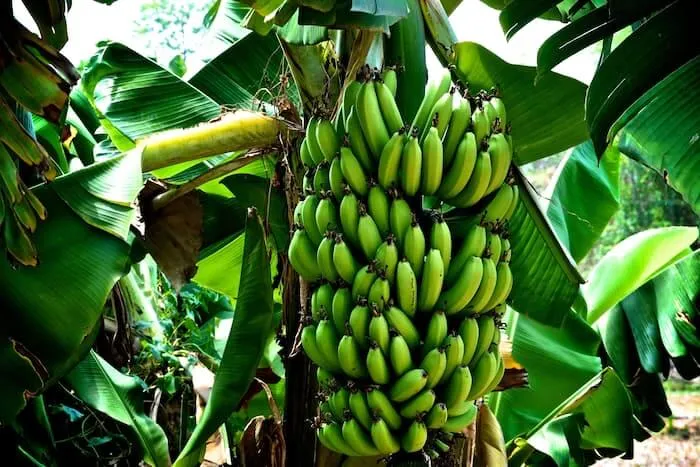By Zuwena Shame
The first FW-resistant Mchare cooking banana has been developed by crop breeders at the International Institute of Tropical Agriculture (IITA) in partnership with Nelson Mandela African Institution of Science and Technology (NM-AIST) and the Tanzania Agriculture Research Institute (TARI). Others collaborating are scientists from Wageningen and Stellenbosch Universities. FW, known locally as Panama disease, Race 1 is a big problem to Tanzanian farmers as the fungus kills banana plants can exist in the soil for about 20 years. Another strain, the Tropical Race 4 (TR4), is present in neighboring Mozambique. “The resistant Mchare hybrids will ensure that Tanzanian farmers will be able to deal with the FW strains present in Tanzania today and those they are likely to encounter in the future.
The main objective of the initiative is to speed up hybrid banana breeding in order to come up with varieties which can be accessed by farmers in time.” said Allan Brown, an IITA senior breeder for Mchare hybrid research responsible for East Africa during a zoom call with PanAfrican Agriculture.
The project meant to address the threat posed to banana production in Tanzania by the FW fungus started eight years ago. In addition to being resistant to FW, the texture, colour, aroma, and flavor of the new hybrids suggest that they are not significantly different from conventional Mchare landraces, according to consumer preference scores. However, their yields have increased up to 65 percent.
Mchare bananas are a cooking banana favoured in Tanzania and in parts of Kenya and other East African countries. The Kilimanjaro region of Tanzania produces an average of 700,000 to one million tons of bananas annually, with a single bunch of Mchare bringing up to US$20 in the local markets.
“The development of new banana hybrids can take up to two decades or more, so the development of these promising hybrids that meet and exceed our product profile in just eight years is a truly remarkable achievement and a testament to the hard work of the young and hardworking team I have in Tanzania and the great relationship between IITA and the national programmes and international partners.
There is no other programme which has developed a banana variety as quick as we have been doing here,” said Rony Swennen, the lead banana breeder from IITA and published on the organisation’s website. “Mchare banana is vital to the economy and food security of the Tanzanian northern highlands and are also very important in Uganda, Kenya, DR Congo and islands of Eastern Africa.
Currently, there are no improved Mchare banana varieties available to farmers. Instead, farmers have been growing their own varieties, which unfortunately are low yielding and very susceptible to deadly diseases, especially Fusarium Wilt disease.” While the global export value of banana has steadily increased from US$9 billion to US$11.8 billion between 2012 and 2016, the share of this market for African countries has been minimal.
Brown said they were negotiating with partners for evaluation and release of the [FW-resistant] Mchare in Kenya. “Mchare in Kenya is not for cooking but for dessert. They call it Muraru. We consider Tanzania and Kenya to be our major market,” he said. TARI banana programme lead Mpoki Shimwale said that they were working closely with IITA in conducting evaluations in three geographical zones in Tanzania — Mbeya, Arusha and Kilimanjaro and plan to add Morogoro as the fourth research zone.
“IIt is our duty to evaluate these Mchare in the selected zones and make comparisons and see if the yields are the same and if they are resistant to disease especially Fusarium wilt,” said Shimwale. “We are still in trials. We have conducted several preliminary tests with farmers so that we can be sure that what will be taken to the fields will be the best Mchare. We expect that 80 percent will get high marks by panelists, including farmers.”
He added that plants will be distributed to farmers after compliance with all the procedures and regulations by the Tanzania Official Seed Certification Institute (TOSCI). More than 30 farmers from all zones will be involved in rapid plant multiplication. The efforts undertaken by the IITA team in collaboration with its partners will enhance the significance of bananas not only as a vital food and cash crop but also as a catalyst for bolstering the economy of smallholder farmers.
TARI and TOSCI have already released four matooke hybrids developed by NARO (National Agricultural Research Organisation, Uganda) and IITA, called NARITA, in 2021 in Tanzania. These matooke hybrids, locally named TARIBAN, are currently multiplied on a large scale by two TARI and two private tissue culture laboratories and first plants distributed in August 2022.

